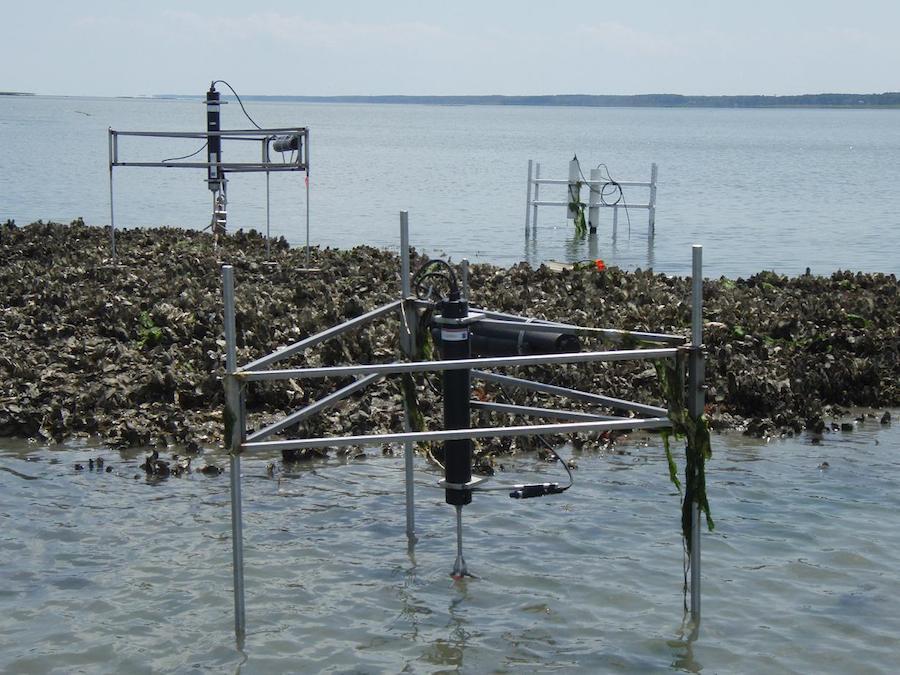Research
Chemical and flow sensing by aquatic organisms
Summary: We study how benthic animals like crayfish, crabs, and lobsters detect and locate odor sources utilizing information they obtain from turbulent flow patterns and odor sampling by their olfactory appendages. This has important implications in the design of man-made sensors that can accurately track and identify sources of chemicals and pollutants in the natural environment.

Above: A planar laser induced fluorescence image of a spiny lobster within a chemical plume.
Filter feeding and metabolism of intertidal oysters
Summary: Oysters are voracious filter feeders, removing not only phytoplankton from the water but also suspended sediment. This increases water clarity, and the bio-deposition of sediments enhances carbon, nitrogen, and phosphorus flux to the ocean floor. We are currently monitoring a group of intertidal oyster reefs to quantify sediment filtration and it's effect on water clarity, and how water quality impacts oyster's net metabolism by measuring their uptake of oxygen by a non-intrusive eddy-correlation technique. The ultimate goal is to determine conditions suitable for the successful restoration of oyster habitat.

Above:Intertidal oysters along the coast of Virginia.
Sediment dynamics along vegetated coastlines
Summary: The Virginia coastline is a diverse landscape of tidal marshes, lagoons, and barrier islands. The seafloor in these regions is comprised mainly of sand and soft muds, and the suspension and deposition of this material depends upon the interaction of waves, tidal currents and stratified flows with the local seafloor topography. We are currently developing an underwater laser-based particle image velocimetry instrument to investigate the impact that submerged and emergent vegetation has on flow dynamics at the sediment-water interface and the role it plays in suspension, transport and deposition of coastal sediments.

Above: Salt marsh in the Virginia Coast Reserve.
Flow and mass transport processes in coral reefs
Summary: Coral reefs are of great importance to the marine environment due to their tremendous productivity and immense diversity of marine organisms. Flow dynamics are vital to these reef communities because they control essential processes such as particle capture by benthic organisms, the uptake of dissolved nutrients, larval dispersal, as well as sediment deposition and removal. These hydrodynamic processes occur over many different scales, affecting both individual corals as well as whole reef systems. At small scales, water flow interacts with the morphology of coral to affect growth rates and control mass exchange, while at large scales, the extreme roughness of the topography influences reef scale circulation patterns and can also control exchanges with the open ocean. Motivated by the importance of hydrodynamics to both large and small scale ecological processes on coral reefs, we perform laboratory measurements in a wave-current water flume, as well as field studies within Panama, Hawaii, and the Red Sea.

Above: Planar laser induced fluorescence image of chemical flux from a coral surface.

Above: Studying coral photosynthesis in Bocas del Toro, Panama.
